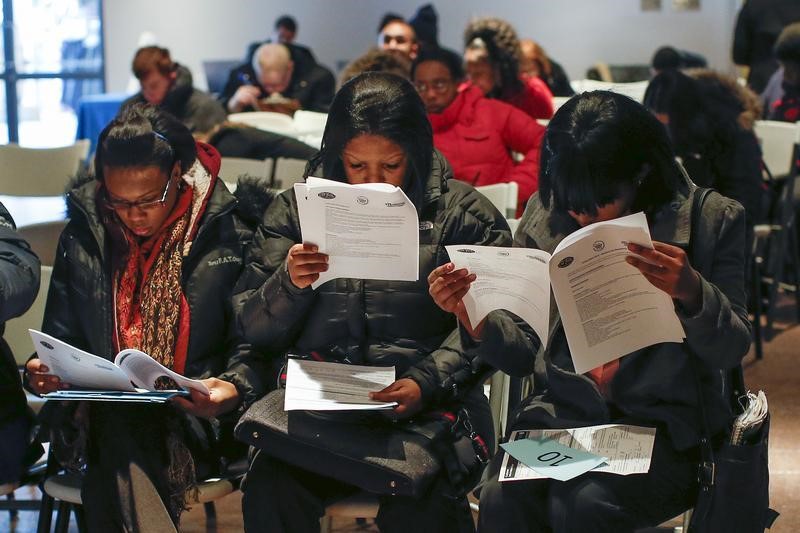By Geoffrey Smith
Investing.com -- The new year wave of layoffs in the U.S. economy appeared to ease off last week, as the number of people filing initial claims for jobless benefits fell to its lowest in nearly three months.
However, there was no clear improvement in the underlying trend, as the total number of people claiming various sorts of unemployment benefits rose by some 700,000 to 19.04 million. The rise was overwhelmingly due to one million more people claiming under the Pandemic Emergency Unemployment Compensation scheme.
The Labor Department said initial jobless claims fell to 730,000 last week, while the previous week's figure was also revised down by 20,000 to 841,000. Analysts had expected a figure of 838,000 before the release.
The number of continuing claims for benefits, which are reported at a one-week lag to initial claims, fell by 101,000 from an upwardly-revised 4.52 million.
The numbers shed further light on Federal Reserve Jerome Powell's relatively downbeat assessment of the state of the labor market in two days of testimony before Congress this week. Powell had stressed that the U.S. still has 10 million fewer jobs than a year ago, just before the pandemic exploded in the U.S. He noted that the actual rate of unemployment is closer to 10% than the official rate of 6.3%, which takes no account of all those who have dropped out of the workforce over the last year.
"There's a lot of slack in the labor market and a long way to go until we get to full employment," Powell told the House Financial Services Committee on Wednesday.
Such a high degree of slack in the labor market was seen by analysts as the chief reason for Powell's insistence that the Fed shouldn't tighten its monetary policy, either by raising interest rates or by reducing its monthly bond purchases, any time soon.
Powell's comments have set the tone for financial markets this week, causing the dollar to fall to its lowest in three months. Ten-Year U.S. Treasury yields, however, have risen to their highest in a year. They retraced slightly after the numbers to trade at 1.45%, down one basis point from before the release.
Separately, the Commerce Department said that the surge in demand for durable goods continued into 2021, with a 3.4% rise in January, their biggest jump in five months.
At the same time, revised data for fourth-quarter economic growth were revised up by 0.1% to 4.1% from an initial estimate of 4.2%.
